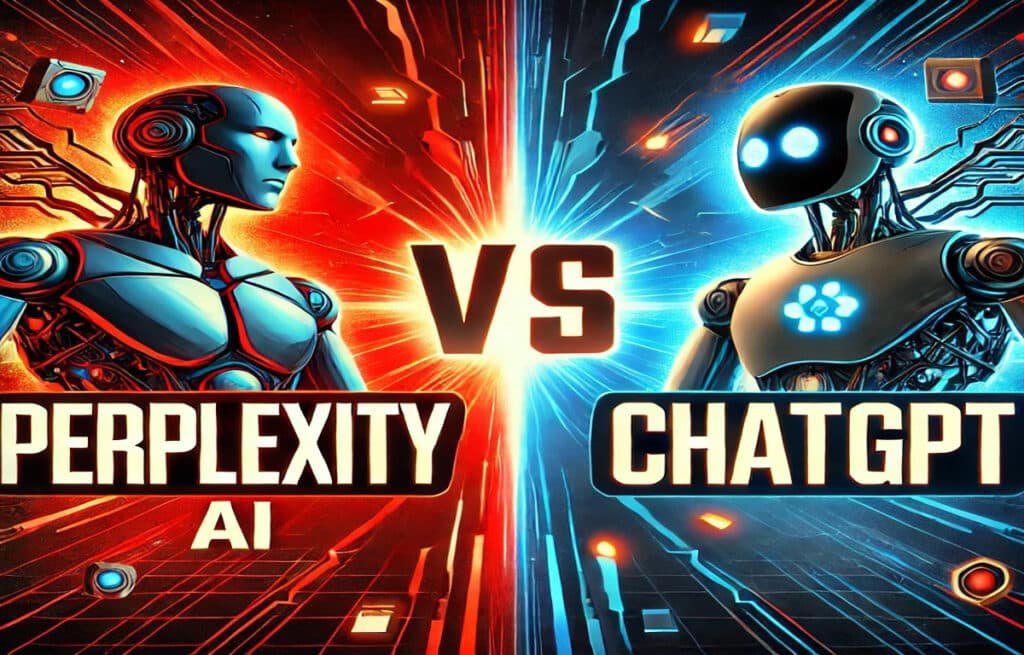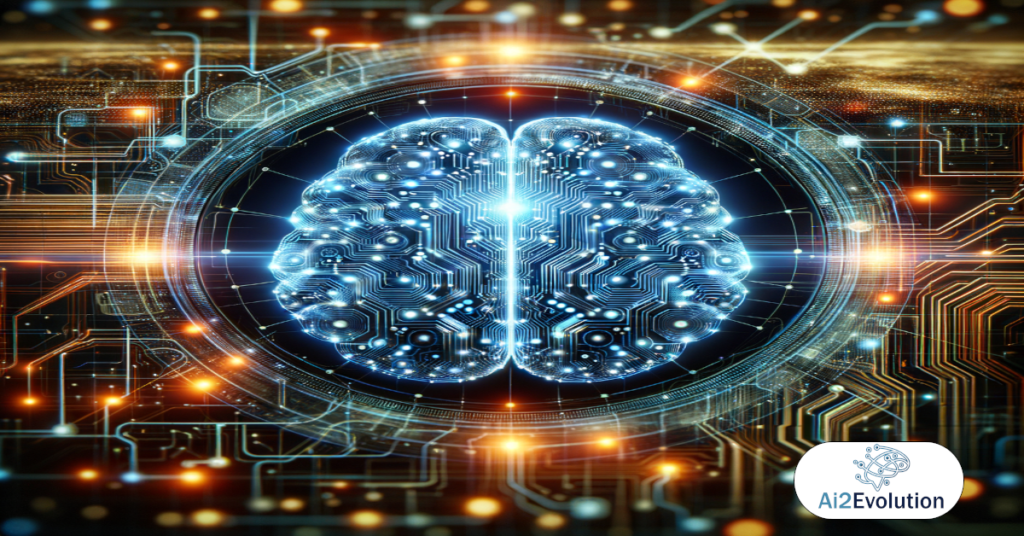Introduction
The rapid advancement of Artificial Intelligence (AI) has given rise to numerous AI-powered tools, each with its own strengths and applications. Among these, Perplexity AI and ChatGPT are two prominent models that have gained significant attention. While both are designed to generate human-like text, they operate differently and serve various purposes. But the burning question is: Is Perplexity AI better than ChatGPT? This article provides an in-depth comparison of the two, exploring their capabilities, performance, and real-world applications. By the end, you’ll have a clearer understanding of which AI model might be the better fit for your needs.
Table of Contents
Understanding Perplexity AI and ChatGPT
Before diving into the comparison, it’s essential to understand what Perplexity AI and ChatGPT are. Both are advanced AI models, but they cater to different needs and are built on distinct architectures.
Perplexity AI
Perplexity AI is designed to generate human-like text and assess the accuracy of its predictions. Initially used as a metric to measure how well a language model predicts a sample, Perplexity AI has evolved to become a powerful tool for text generation. It helps developers and users evaluate how uncertain or confident a model is when predicting the next word in a sequence, ultimately contributing to its effectiveness in generating coherent and contextually appropriate text.
ChatGPT
ChatGPT, developed by OpenAI, is a generative AI model based on the GPT (Generative Pre-trained Transformer) architecture. It excels at creating text that is contextually relevant and human-like, making it ideal for applications such as chatbots, content creation, and interactive dialogues. ChatGPT is renowned for its ability to maintain context and coherence over extended conversations, making it a versatile tool in various industries.
How Do Perplexity AI and ChatGPT Work?
Both Perplexity AI and ChatGPT are built on the principles of natural language processing (NLP), but they have different operational focuses.
Perplexity AI operates by generating text based on input while evaluating its own performance. It analyzes the probability distribution of words and phrases, allowing it to make predictions about what comes next in a sequence. This self-evaluation helps Perplexity AI refine its text generation capabilities, ensuring that the output is both coherent and contextually appropriate.
ChatGPT generates text by leveraging its vast training dataset, which includes a wide range of text sources. When given an input, ChatGPT processes the information and produces a response that is relevant to the context. Its architecture allows it to handle complex queries, maintain conversation flow, and generate creative content, making it highly effective in various real-world applications.
Comparison Based on Accuracy
Accuracy is a critical factor when comparing AI models, especially in the realm of text generation. Let’s explore how Perplexity AI and ChatGPT measure up in this regard.
Accuracy in Contextual Understanding
Perplexity AI and ChatGPT both aim to generate accurate and contextually appropriate text, but they approach this goal differently.
- Perplexity AI focuses on predicting the next word in a sequence with high accuracy. It continuously evaluates its performance, adjusting its predictions to improve the coherence and relevance of the generated text. This iterative process allows Perplexity AI to produce text that aligns closely with the intended context.
- ChatGPT relies on its extensive training to generate text that fits the context provided by the user. Its accuracy in contextual understanding is enhanced by its ability to reference a large dataset, which helps it generate responses that are not only accurate but also rich in detail and nuance.
Examples of Accuracy
- Perplexity AI Example: When generating text in response to a prompt like “The economic impact of AI includes ____,” Perplexity AI would predict and generate a word or phrase that logically completes the sentence. It would then assess how well this prediction aligns with the overall context, making adjustments as necessary to improve accuracy.
- ChatGPT Example: Given a complex prompt such as “Explain the ethical implications of AI in healthcare,” ChatGPT would generate a detailed and contextually accurate response, drawing on its training to provide insights that are both relevant and well-informed.
Versatility and Application Scope
Both Perplexity AI and ChatGPT are versatile, but their application scopes differ significantly.
Perplexity AI’s Versatility
Perplexity AI’s versatility lies in its ability to generate text while simultaneously evaluating its performance. This makes it a valuable tool not only for developers who need to fine-tune models but also for users who require accurate and contextually relevant text. Its application extends to content generation, automated responses, and even creative writing, where maintaining coherence and context is crucial.
ChatGPT’s Versatility
ChatGPT’s versatility is more apparent to the general public. It can be used in a wide range of applications, including:
- Customer Support: Automating responses to common inquiries.
- Content Creation: Generating articles, blogs, and social media posts.
- Education: Assisting with explanations, tutoring, and providing learning resources.
- Entertainment: Creating stories, jokes, and interactive dialogue.
ChatGPT’s ability to adapt to different conversational styles and topics makes it a highly versatile tool across various industries.
User Experience and Interaction
The user experience provided by AI models can significantly influence their adoption and effectiveness. Let’s compare Perplexity AI and ChatGPT in terms of user experience.
Perplexity AI’s User Interface
Perplexity AI offers a user interface that is designed for both developers and end-users. For developers, the interface provides detailed insights into the model’s performance, allowing for real-time adjustments to improve accuracy. For end-users, Perplexity AI offers a straightforward platform to input prompts and receive generated text, making it accessible for various applications.
ChatGPT’s User Interface
ChatGPT provides a user-friendly interface designed for interaction. Whether embedded in a chatbot, used in an application, or accessed via a web-based platform, ChatGPT’s interface is intuitive, allowing users to engage in conversations, ask questions, or request content with ease. The simplicity and accessibility of ChatGPT’s interface make it a popular choice among non-technical users.
Performance and Speed
Performance and speed are crucial, especially when deploying AI models in real-time applications.
Perplexity AI’s Performance Metrics
Perplexity AI is designed to perform efficiently while generating text. It evaluates its own performance in real-time, which can slightly impact speed but significantly improves the accuracy and relevance of its output. This balance between performance and speed makes Perplexity AI suitable for applications where precision is more critical than rapid response.
ChatGPT’s Performance Metrics
ChatGPT is optimized for quick responses, providing users with immediate, contextually accurate text. Its performance has been fine-tuned to handle a wide range of queries without sacrificing speed. This makes ChatGPT an ideal choice for applications requiring real-time interaction, such as customer support or live chat.
Cost and Accessibility
Cost and accessibility are often deciding factors when choosing between AI tools.
Perplexity AI Pricing
Perplexity AI offers various pricing models, depending on the depth of access required. For developers, pricing might include more advanced features and detailed performance metrics. For general users, Perplexity AI may offer a tiered pricing model, making it accessible to a broader audience while still providing essential features for text generation and evaluation.
ChatGPT Pricing
ChatGPT also offers a range of pricing options, including free access with limited features and premium plans for enhanced capabilities. OpenAI’s pricing model for ChatGPT is designed to cater to different user needs, from individual users looking for basic text generation to enterprises requiring robust, large-scale implementations.
Real-World Applications
Both Perplexity AI and ChatGPT have real-world applications, but they are utilized in different contexts.
Perplexity AI in Action
Perplexity AI is used across various industries where accuracy and contextual relevance are paramount. Examples include:
- Content Generation: Creating articles, reports, and other written content that requires high precision.
- Customer Service: Automating responses while ensuring that the generated text is contextually appropriate.
- Creative Writing: Assisting writers in generating ideas, plots, and dialogue that are coherent and engaging.
ChatGPT in Action
ChatGPT is used in numerous real-world applications, including:
- Healthcare: Providing information and answering patient queries.
- Finance: Assisting with customer inquiries and generating financial reports.
- Retail: Enhancing customer service through automated chatbots.
- Education: Offering tutoring services and educational content.
ChatGPT’s widespread application in consumer-facing roles underscores its adaptability and effectiveness.
What is Perplexity AI?
Perplexity AI is an AI tool that generates human-like text and evaluates its performance based on how well it predicts the next word in a sequence.
How does ChatGPT work?
ChatGPT uses a generative pre-trained transformer model to create text-based responses based on input from users. It is trained on a vast dataset to ensure contextually relevant outputs.
Is Perplexity AI better than ChatGPT?
It depends on the context. Perplexity AI is better for generating text with a focus on accuracy and contextual relevance, while ChatGPT excels in generating diverse and engaging human-like text for various applications.
Can Perplexity AI generate text?
Yes, Perplexity AI can generate text and simultaneously evaluate its performance to ensure accuracy and relevance.
Which AI is more versatile?
ChatGPT is more versatile in terms of practical applications, such as customer service, content creation, and education.
Conclusion
When comparing Perplexity AI and ChatGPT, it’s clear that each serves a different purpose within the AI ecosystem. Perplexity AI is essential for generating accurate, contextually relevant text, making it a valuable tool for developers and users who prioritize precision. On the other hand, ChatGPT is a powerful tool for generating diverse, human-like text, making it highly versatile in real-world applications.
Ultimately, whether Perplexity AI is better than ChatGPT depends on your specific needs. If you require high accuracy and contextual relevance, Perplexity AI is invaluable. If you need an AI to interact with users or generate creative content, ChatGPT is the superior choice.


